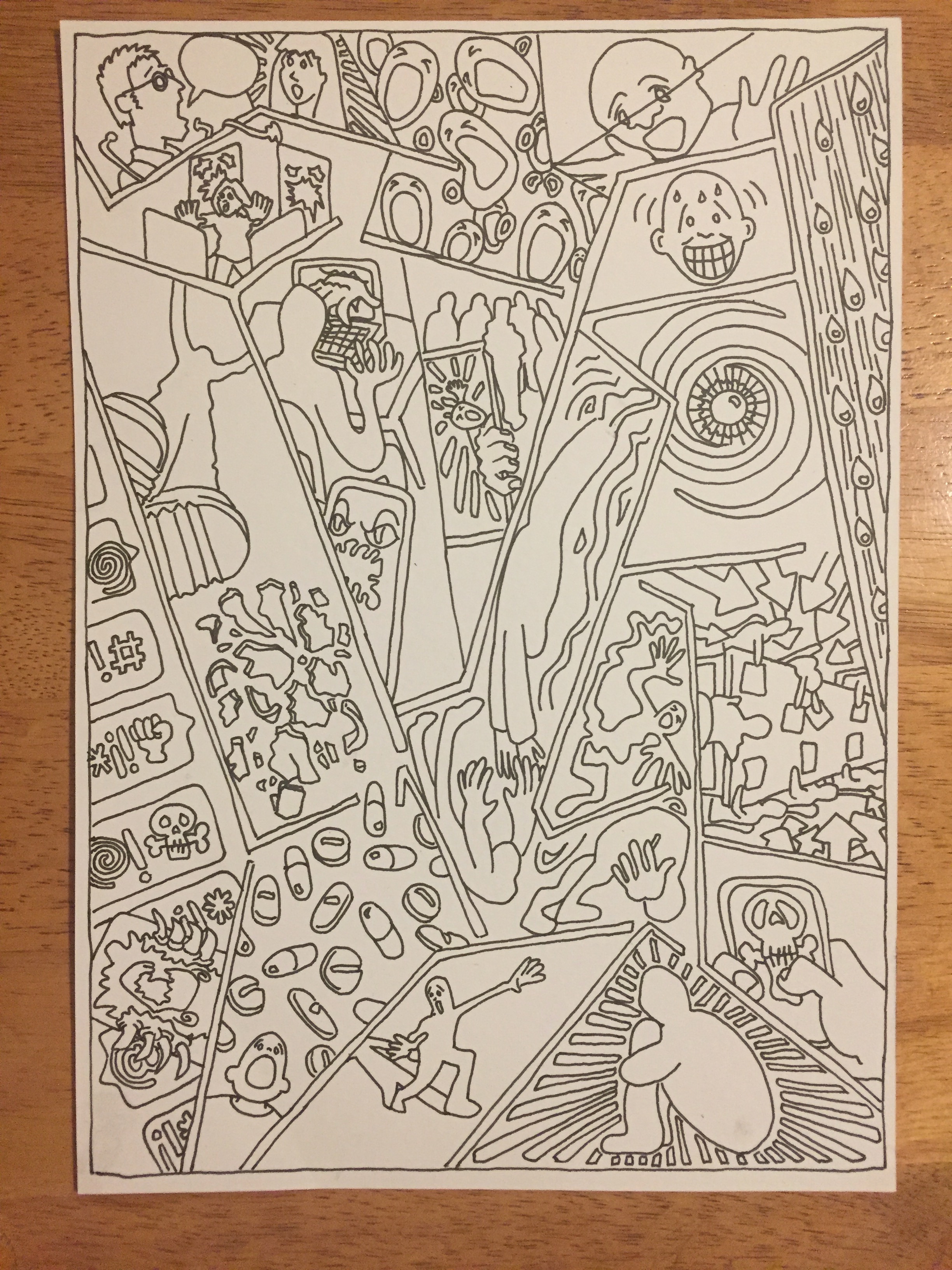A new week begins, oblivious to the shooting stars of work, things to do, quick jobs and a myriad of deadlines that arise, approach and depart. In amongst all this I’m working on my Escher piece on mental health [fig.1].
fig.1 Development drawing
Last post I discussed the initial sketch and the generation of the concept – now it is time for shaping it. The idea moves from a sketch to a more detailed drawing, a chance to re-interrogate the ideas, to see if they still work, and to test the logic of each panel. The first step is to translate the shape of the drawing – my sketch book is long and thin, so tends to squish ideas. A new drawing gives me the opportunity to explore more width, to see which panels need more space, and which benefit from the elongation to work.
The quality of line and shape is more carefully described on a larger scale – navigating swirling movement and lines of perspective. In adding in or removing moments of detail quirks are made permanent and weight and impetus is given to scenes – monsters realised, psychology intensified. Panels are tweaked, and in places, where I can no longer see my thinking (or disagree with it), completely changed.
Through this process I find myself becoming obsessed with the movement of the pencil. From the initial flicks and swirls of the compositional marks, through to the pressure of the final sweep. There is a tension between the need to embed my intention in the line – for clarity, and the need to remain relaxed enough to describe the languid sweeps and curls; a tension between the need for confidence in the making of the mark, and the fear of slipping. As a result, in my drawing I think there is both a façade of bravado, and an ability to embrace – and sometimes revel in, mistakes, wobbles – elements that disrupt concepts and intentions.
fig.2 Line ink
The final aspect of the drawing is to suggest areas of tone and contrast. I do this even though the next step is to ink in the line [fig.2], knowing that when I scan in the ink drawing I will colour using this tonal plate to guide the colour palate. Adding tone gives me the opportunity to consider how the picture plane will be broken up, and how the eye will move across the panels, and so how the eye will read, or be guided to read the sequence. In this case the, although the sequence will not read in a linear manner, the reader will begin in the western comics tradition – providing the opportunity to use depth and a moving horizon to distract and disorientate, and to sculpt a new way of experiencing the narrative.
Which, given the topic of mental health, and how it is perceived and experienced , is kind of why I started this in the first place.


